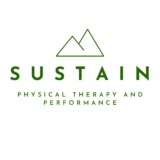Neck Pain
Do You Struggle With Sleeping, Lifting Weights, Reaching Overhead Cabinets, Turning Your Head While Driving, Or Performing Everyday Tasks At Home Or Work Due To Neck Pain?
Does This Sound Familiar?
- You anticipated that the discomfort would diminish after a few days or weeks, but it has persisted.
- You've attempted various at-home treatments, such as heating pads, ice, and TENS devices, but to no avail, correct?
- Have you received a few massages, but the discomfort returned within a few days?
- You sought medical attention, underwent an examination, received an injection, or were prescribed medication, but the effects wore off quickly?
- You've previously undergone physical therapy, but it was unsuccessful.
- You've come to the conclusion that you can manage if you simply avoid engaging in painful activities, right?

Our Goal Is To Provide Lasting Solutions For Your Neck Problems.
Common Neck Disorders We Treat:
- Headaches
- Joint Stiffness
- Muscle Strains and Tension
- Degenerative Disc Disease and Injuries
Typical Causes Of These Disorders Can Include
1. Impaired mechanics result from weakness and muscle imbalances, reduced range of motion, and compromised posture due to joint stiffness and muscle inflexibility.
2. Additionally, sudden impact or load on the tissue can result in injury.
3. At the same time, chronic compensatory mechanisms can cause avoidance of activity in certain muscle groups and overuse of other tissues due to past injuries or fear of future injuries.
Rest assured that we can help identify the root causes of your neck issues and provide effective treatment plans for lasting relief.
Sustain Physical Therapy and Performance Approach
1. Improving neck and thoracic posture is important.
2. Alleviate tension in upper neck muscles.
3. Enhance flexibility in the chest and neck muscles.
4. Joint mobility can be improved through manipulation, manual joint mobilization, and manual traction.
5. Strengthen neck and shoulder blade muscles more effectively.
6. Techniques such as massage, and self-adhered mobility and strengthening.
7. Perform specific nerve exercises to reduce nerve sensitivity and alleviate numbness, tingling, and pain that may extend down the arm.
8. Incorporate functional and plyometric exercises, such as throwing, catching, pushing, pulling, and pressing, into your routine to improve overall function.
Key Points to Keep in Mind
- Tissues have the ability to heal on their own, but sometimes, the healing process gets stuck in the inflammatory stage and requires assistance to progress to full recovery.
- MRI and X-ray scans may not always accurately identify the source of pain. Some people may experience pain despite having no apparent tissue damage, while others may have tissue damage but no pain or functional impairment.
- Post-exercise soreness is not always a cause for concern, as it can be a sign of micro-damage that leads to stronger tissue growth. However, it's important to use soreness as an indicator of when to adjust training intensity.
- With proper guidance, correct mechanics, and gradual tissue loading, it is usually possible to return to previous or desired activities.
